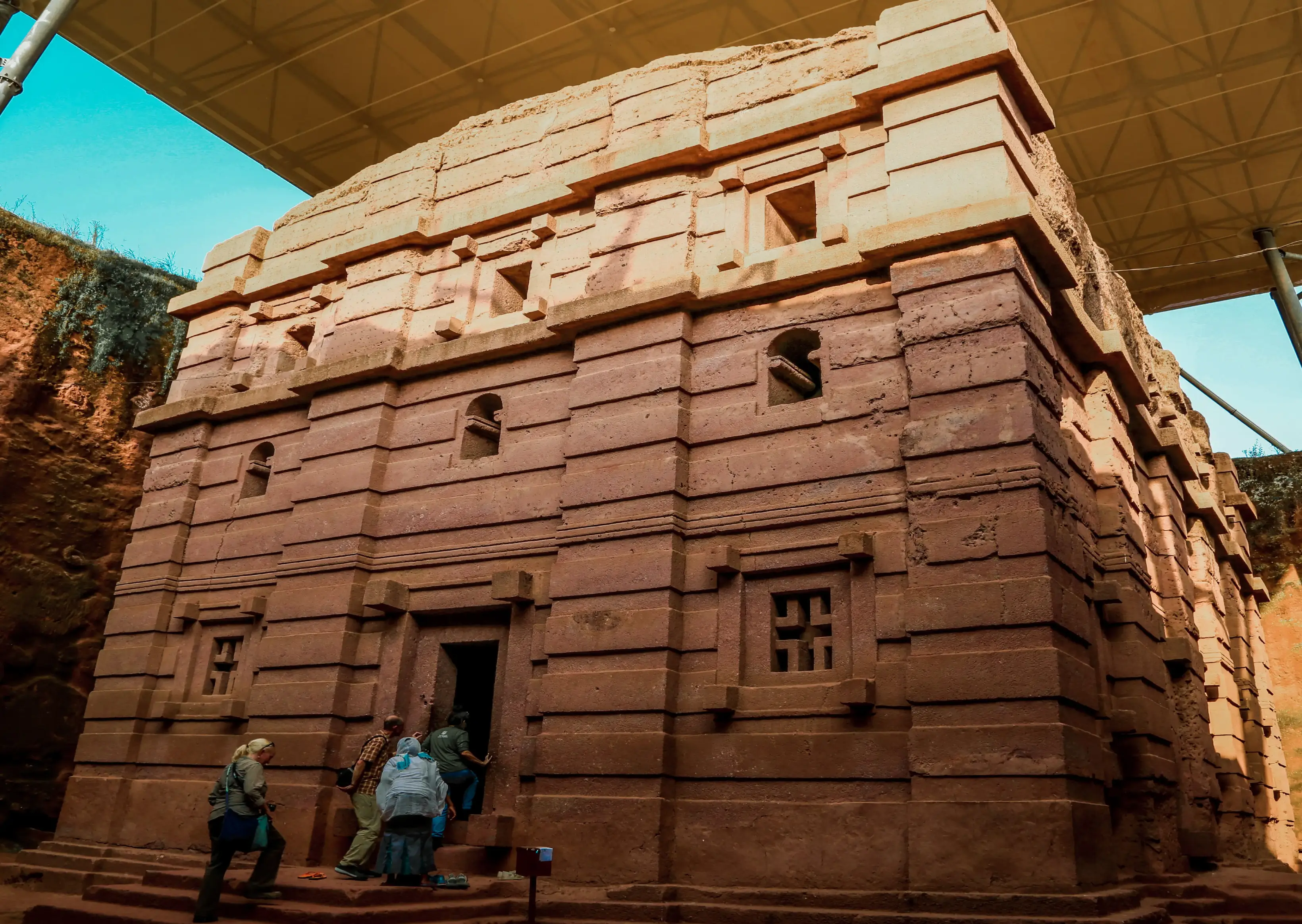

The region is rich in historical and archeological sites since it was the hub of an ancient civilization. The ancient road is also home to four world heritage sites, including the only natural cultural places in the country, the Simien Mountains National Park.
Ethiopia’s holiest cities, Lalibela is famous for its rock-cut churches. The Capital city of the Kingdom of Aksum is one of the oldest inhabited places in Africa. Lake Tana is the source of the Blue Nile. The Royal Palaces of Gondar, and unique landscape and endemic fauna of Simien Mountains.
Fasiladas' Palace in Gonder is known as the "Camelot of Africa." It is well-known for its extraordinary array of decaying castles, fortifications, and 17th-century churches. Fasiladas' Palace, right inside the main gate, is the most spectacular and also the oldest structure. It is 32 meters tall, with a crenulated parapet and four domed towers composed of crudely hewn stones.
In the 12th century, King Lalibela of Ethiopia intended to re-create Jerusalem, and Lalibela fashioned it from the volcanic rock beneath his feet, possibly anxious for God to join him. Lalibela is the live, pulsating heart of spiritual Ethiopia and one of the most enchanting locations in the country. However, he handled things a bit differently.
Bahir Dar is a lovely lakeside town that is Ethiopia's third largest and, probably, most picturesque city. As the regional state of Amhara's capital, the city is home to old monasteries, attractive resorts, unusual fish markets, picturesque lakes, and, of course, the famed Blue Nile Falls. Lake Tana, Ethiopia's biggest lake, is the primary attraction. Lake Tana has several islands, and on these islands are historic monasteries with magnificent murals and wall paintings.
Back in the days of the Axumite empire, Axum was a very significant metropolis. It is one of Ethiopia's most culturally significant sites, well known for its Stelae field, where massive obelisks tower dozens of meters into the sky.